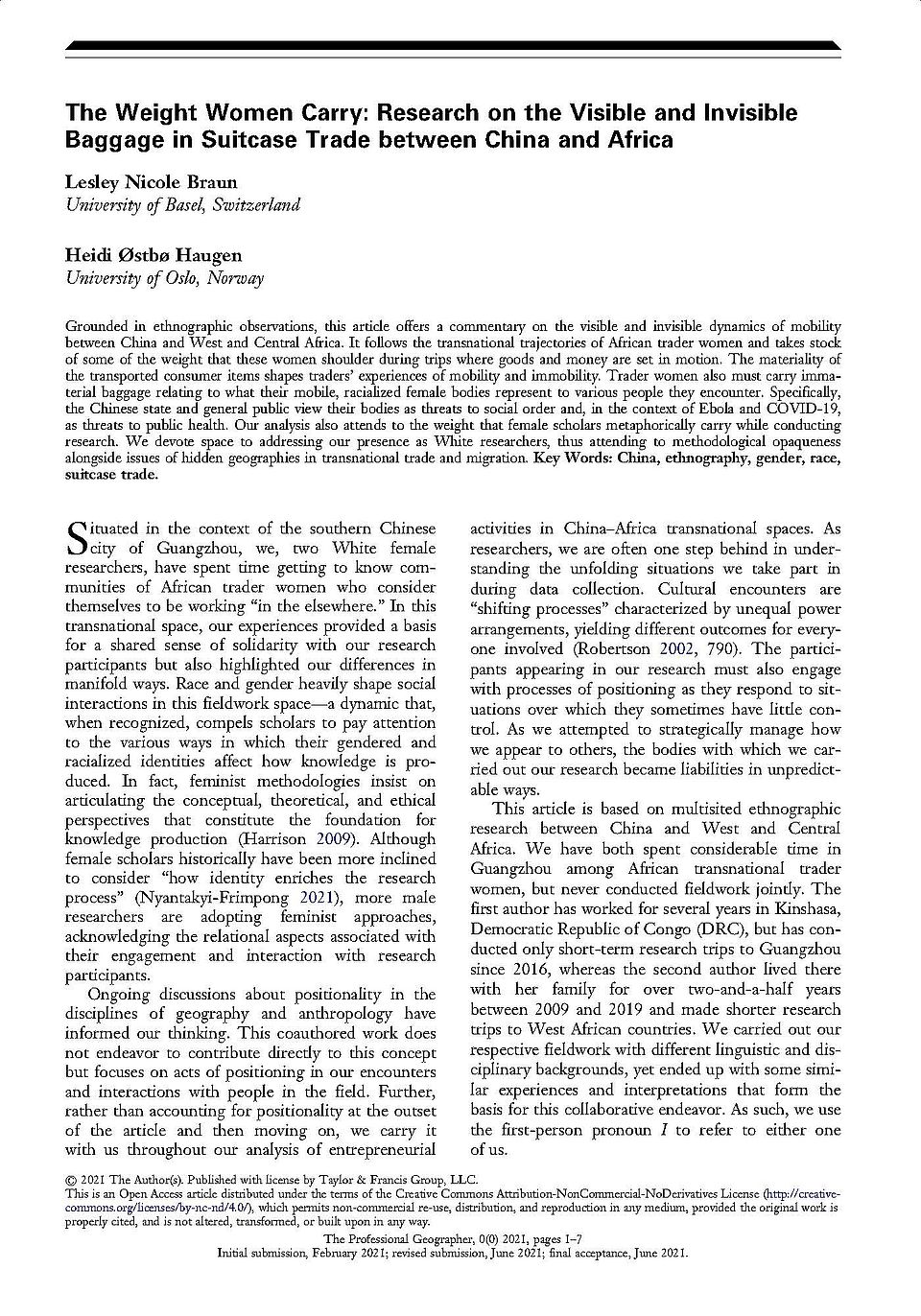News
/ Research
Publication: The Weight Women Carry. Research on the Visible and Invisible Baggage in Suitcase Trade between China and Africa

This article co-authored by Lesley Braun follows the transnational trajectories of African trader women between China and West and Central Africa and takes stock of some of the weight they shoulder. This refers to the to materiality of the transported consumer items as well as the immaterial baggage relating to what the women's mobile, racialized female bodies represent to various people they encounter.
Abstract
Grounded in ethnographic observations, this article offers a commentary on the visible and invisible dynamics of mobility between China and West and Central Africa. It follows the transnational trajectories of African trader women and takes stock of some of the weight that these women shoulder during trips where goods and money are set in motion. The materiality of the transported consumer items shapes traders’ experiences of mobility and immobility. Trader women also must carry immaterial baggage relating to what their mobile, racialized female bodies represent to various people they encounter. Specifically, the Chinese state and general public view their bodies as threats to social order and, in the context of Ebola and COVID-19, as threats to public health. Our analysis also attends to the weight that female scholars metaphorically carry while conducting research. We devote space to addressing our presence as White researchers, thus attending to methodological opaqueness alongside issues of hidden geographies in transnational trade and migration.

